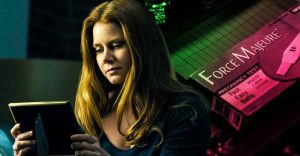Friday The 13th’s Original Film Plan Explained (& Why It Changed)

Friday the 13th originally planned to go in an entirely different direction as a franchise, which didn’t include Jason Voorhees. Today, the slasher series is best known as the home of the hockey mask-wearing, teen-slaughtering Jason, who has become one of horror cinema’s most famous characters. However, long before he became the focus of the series, there was a very different plan in place for the Friday the 13th series.
When the original Friday the 13th was released to theaters in 1980, its immediate financial success caught its filmmakers completely off guard. Produced on a minuscule budget and made largely to pass time between larger projects, the first Friday wasn’t intended to launch a massive franchise. However, its unexpectedly lucrative reception made it clear that audiences wanted more, and it didn’t take long for follow-up plans to begin in earnest.
While the eventual sequels focused on developing Jason Voorhees from a minor part of the first film’s mythology into a slasher superstar, the original plans Friday the 13th as a potential franchise were very something very different. As viewers who have seen the original Friday will know, the killer was Jason’s mother Pamela Voorhees, and her rampage was motivated by a thirst for revenge rather than anything supernatural. This was the approach initially conceived for the series, with each entry acting as a non-supernatural, standalone tale set on the infamous date.

Friday the 13th franchise creator Sean S. Cunningham has gone on record multiple times saying that his early intent for future installments was to take an anthology-style approach. “The question became, ‘Well, what’s it going to be?’” Cunningham once stated to Esquire in regard to those first plans for a sequel. “I resisted doing anything like a supernatural story because, frankly, I didn’t get supernatural at the time and I thought Friday the 13th could be like an anthology. You could have one scary movie set in the summer camp and we can have another scary movie set someplace else and so on.” Former Paramount Pictures’ Chairman/CEO Frank Mancuso, Sr. also added that the studio “wanted it to be an event, where teenagers would flock to the theaters on that Friday night to see the latest episode.”
If these plans had come to fruition, Friday the 13th could’ve evolved into the slasher equivalent of The Twilight Zone, with each story separate from the others in terms of continuity, but connected under a larger banner of Friday the 13th urban legends and horror stories. This is a similar approach that John Carpenter attempted when he produced Halloween III, which tried an anthology approach. In the end, the same issue that led to Halloween III‘s failure was also what ended the concept of turning Friday into a series of unconnected films; the lack of a familiar killer. When Phil Scuderi, a producer on the first entry, suggested that Jason Voorhees himself become the new face of the franchise, both the studio and the eventual director of Friday the 13th Part II, Steve Miner, loved the idea. He immediately began developing the Friday the 13th sequel with this premise in mind, and the rest is horror movie history.
About The Author

















